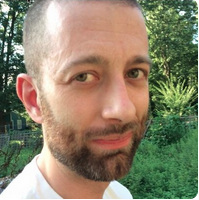And over the past couple weeks, Cheryl, Karl, Crystal, Kate, and I have been working on filling in that final slide on the Bergmann-Sams slideshow. So, dear readers, you can expect to see blogs from all of us over the next few weeks which attempt to do couple of things:
1. Clarify/push forward the philosophies central to the Flipped Class Movement, at least as they pertain to our individual contexts. (And yes, there will be differences; the pinnacle of a Flipped math class looks very different from a Flipped English class, and so forth.)
2. Explain, in a concrete way, how these Big Ideas can manifest themselves in a real classroom in front of real students. This step will include lesson/unit plans, project designs, etc.
Also, we will be publishing a 4-or-5-way collaborative video in about a week or so, talking about these things in summary/interactive form. Be on the lookout for that.
* * *
So, let me begin with a new Big Idea, to get the metaphorical ball rolling.
About a week ago, Cheryl Morris wrote a blog about our first "Conversations in ELAflip" subject, which was "the difference between content and process videos." A quick summary/pair of definitions:
Content videos are pretty much typical classroom direct instruction--condensed lectures for the purposes of communicating basic facts from one party to another. Example would include things like "here are the three steps you need to include in a research paper introduction" or "here are the mathematical steps you need to follow to calculate molar mass" (I think I said that right; I'm not a chemistry teacher).
Process videos are exactly what they sound like: videos in which the student can view an expert (or more than one expert) actually working their way through the process, using a problem/question/prompt they have never seen before. You can see examples of those here.
We believe that the spontaneity and struggles that come forth when experts fight their way through a new problem are highly motivational and instructive for our students. In our personal context, we know this: writing is hard. It's difficult for everyone, from first graders crafting their first sentences all the way to masters of language. And for students to get to see two people--their teachers, people who are supposed to have "all this writing stuff figured out already"--have to spend 5-10 minutes crafting and arguing over ONE SENTENCE... it helps. It's our version of Michael singing "You Are Not Alone." We are here with you. Really.
So. Long preamble to get to the first (or maybe by now it's the 2nd?) Big Idea: Traditional, unflipped classes tend to be focused almost exclusively on content delivery--probably 85% percent of the class time. That leaves around 15% for process/modeling/labs, etc. The Flip, in our minds, is based on reversing that set of percentages to 85% for process, 15% for content.
We do believe students need content, that they need both historical context and content knowledge in English, but we also believe that we can accomplish most of those things in brief video formats. You can see this (85-15) pattern happen in both our "Research Paper: Introductions" and "Conclusions" cycles; for each, we have one short video outlining the necessary components (content) and 3 or 4 longer videos which show us walking through the process of writing one (process).
What follows from this idea is very important: education is about student learning, not impressing our students.
And what follows from that one is perhaps the most important: education is about a little knowledge, a lot of thinking, and a human connection.

 RSS Feed
RSS Feed
